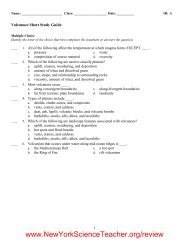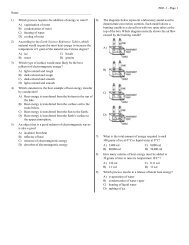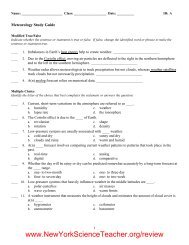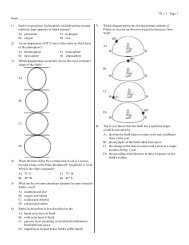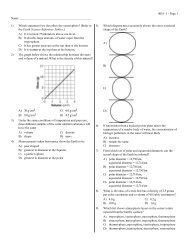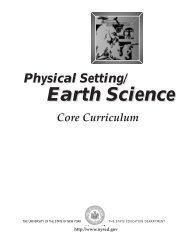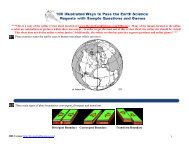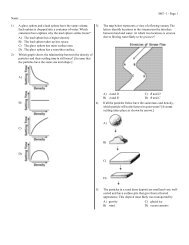physical setting earth science
physical setting earth science
physical setting earth science
Create successful ePaper yourself
Turn your PDF publications into a flip-book with our unique Google optimized e-Paper software.
Base your answers to questions 53 through 56 on the world map in your answer booklet and on yourknowledge of Earth <strong>science</strong>. The map shows major <strong>earth</strong>quakes and volcanic activity occurring from 1996through 2000. Letter A represents a volcano on a crustal plate boundary.53 In your answer booklet, place an X on the map to show the location of the NazcaPlate. [1]54 Explain why most major <strong>earth</strong>quakes are found in specific zones instead of beingrandomly scattered across Earth’s surface. [1]55 Identify the source of the magma for the volcanic activity in Hawaii. [1]56 Identify the type of plate movement responsible for the presence of the volcano atlocation A. [1]Base your answers to questions 57 through 59 on the diagram below, which shows the Moon’s orbit aroundEarth. Four positions of the Moon are represented by letters A, B, C, and D. Earth’s North Pole is labeled. Theshaded areas on Earth and the Moon represent night.DMoon’s orbitSun’sraysANorthPoleEarthCB(Not drawn to scale)57 What motion of the Moon results in the Moon phases as viewed from Earth? [1]58 A total solar eclipse sometimes occurs when the Moon is at position A. Explain whya total solar eclipse does not occur every time the Moon is at position A. [1]59 State one season that begins when the line separating day and night passes throughEarth’s North Pole, as shown in this diagram. [1]P.S./E. Sci.–Jan. ’06 [19] [OVER]



